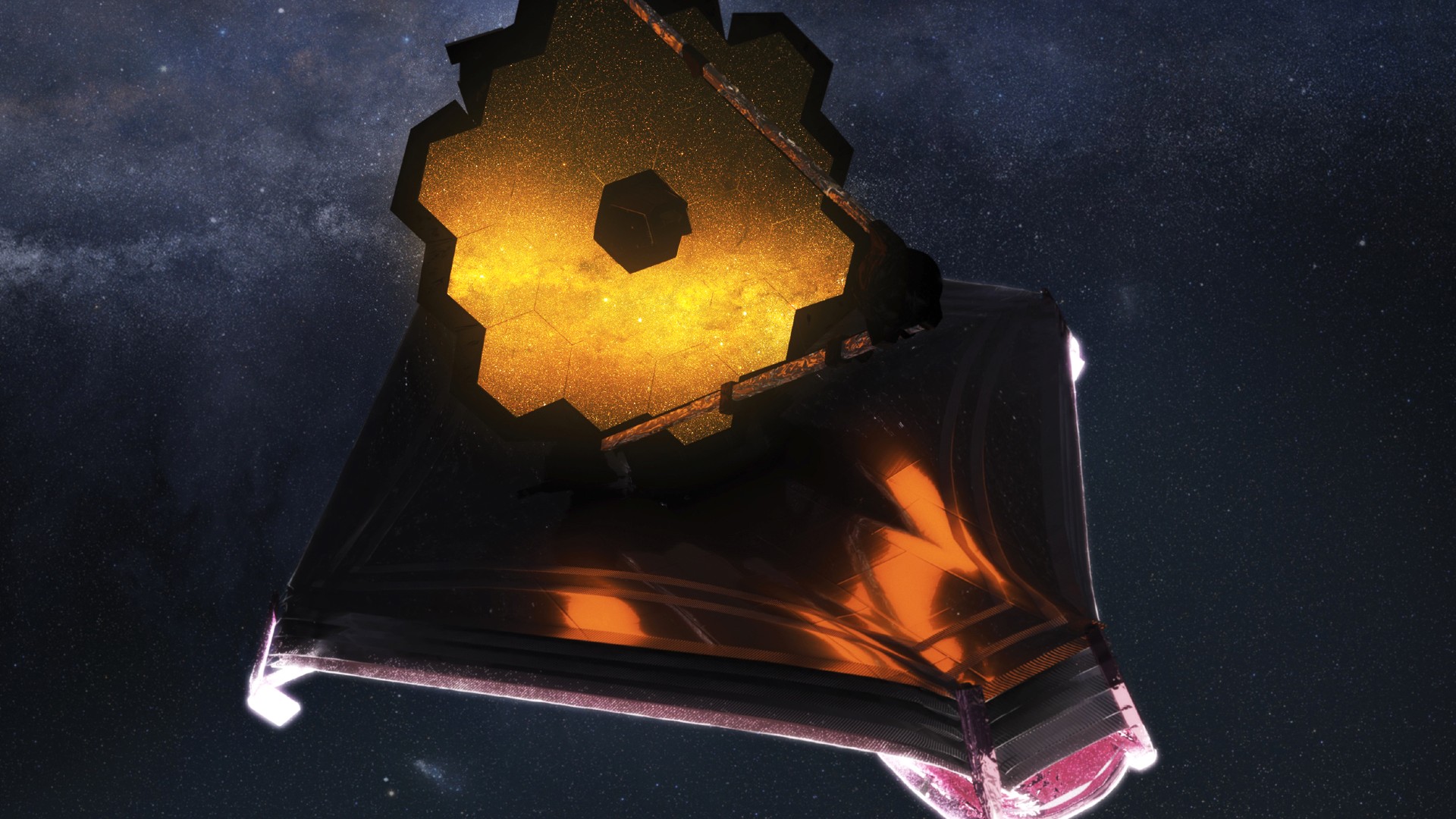NASA investigating glitch on James Webb Space Telescope's ultracold camera
The issue affects one of four observing modes of the Mid-Infrared Instrument.

James Webb Space Telescope's ultracold camera has experienced a technical glitch that is forcing the ground team to postpone some observations.
The problem affected the James Webb Space Telescope's Mid-Infrared Instrument's (MIRI) grating wheel, which allows scientists to choose the wavelength of light they want to focus on. The wheel is used in only one of MIRI's four observation modes, the medium-resolution spectroscopy (MRS) mode, in which the camera takes not images but light spectra (fingerprints of light absorption of the various chemical elements in the observed objects).
The ground control teams first detected friction in the wheel in late August, NASA officials wrote in a statement released on Tuesday (Sept. 20), and after further investigation decided to pause observations in the affected mode. On Sept. 6, the agency convened an anomaly review board "to assess the best path forward," the statement added.
Related: Marvel at the James Webb Space Telescope's largest image of the cosmos yet
"The Webb team has paused in scheduling observations using this particular observing mode while they continue to analyze its behavior and are currently developing strategies to resume MRS observations as soon as possible," NASA officials wrote in the statement. "The observatory is in good health, and MIRI's other three observing modes — imaging, low-resolution spectroscopy and coronagraphy — are operating normally and remain available for science observations."
MIRI, one of four high-tech instruments on the James Webb Space Telescope, is a combined camera and spectrograph, which means it takes both images and light spectra of the distant universe. A specialist in detecting mid-infrared wavelengths, MIRI can see light from far-away galaxies, as well as stars forming inside of shrouds of dust. While all of Webb's instruments require extremely low temperatures to observe properly, MIRI is the coldest of them all.
The other three instruments — NIRCam, NIRSpec and FGS/NIRISS — rely on the telescope's tennis-court-sized sunshield to reach temperatures of minus 369.4 degrees Fahrenheit (minus 223 degrees Celsius). MIRI, in addition to the sunshield, requires special cryocoolers to achieve an even colder temperature of minus 447 degrees F (minus 266 degrees C), only 12 degrees F (7 degrees C) above absolute zero, the temperature at which the motion of atoms stops.
Get the Space.com Newsletter
Breaking space news, the latest updates on rocket launches, skywatching events and more!
Follow Tereza Pultarova @TerezaPultarova. Follow us on Twitter @Spacedotcom and on Facebook.
Join our Space Forums to keep talking space on the latest missions, night sky and more! And if you have a news tip, correction or comment, let us know at: community@space.com.

Tereza is a London-based science and technology journalist, aspiring fiction writer and amateur gymnast. Originally from Prague, the Czech Republic, she spent the first seven years of her career working as a reporter, script-writer and presenter for various TV programmes of the Czech Public Service Television. She later took a career break to pursue further education and added a Master's in Science from the International Space University, France, to her Bachelor's in Journalism and Master's in Cultural Anthropology from Prague's Charles University. She worked as a reporter at the Engineering and Technology magazine, freelanced for a range of publications including Live Science, Space.com, Professional Engineering, Via Satellite and Space News and served as a maternity cover science editor at the European Space Agency.









